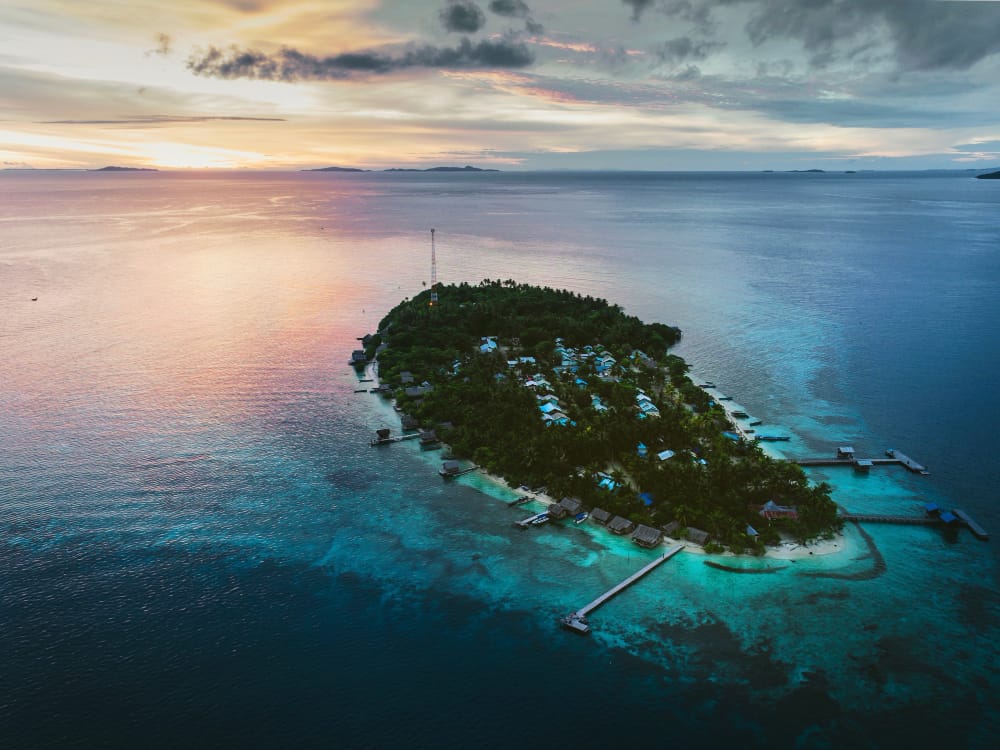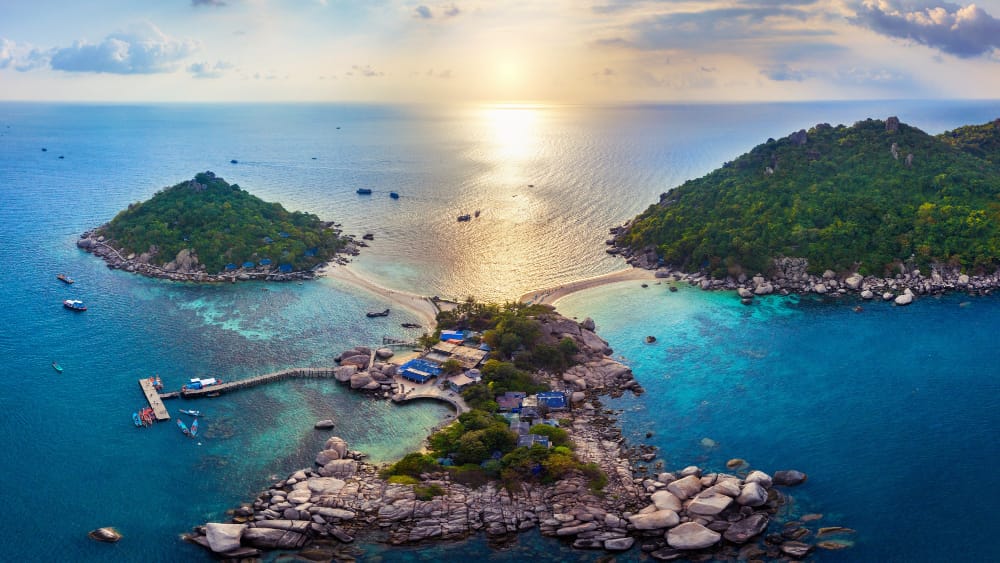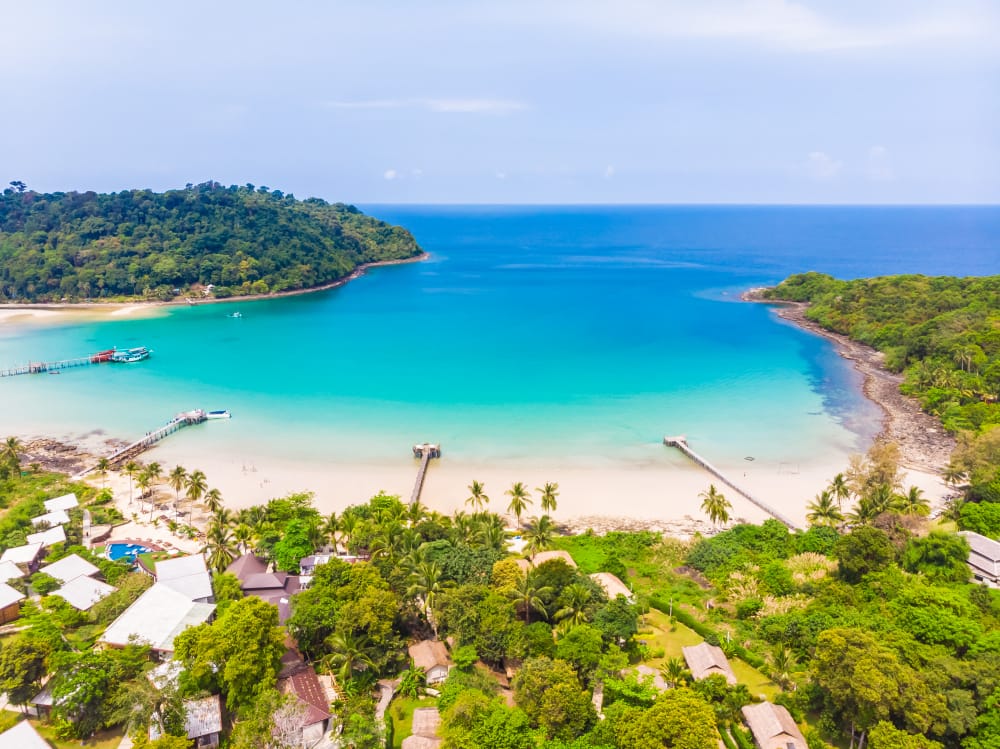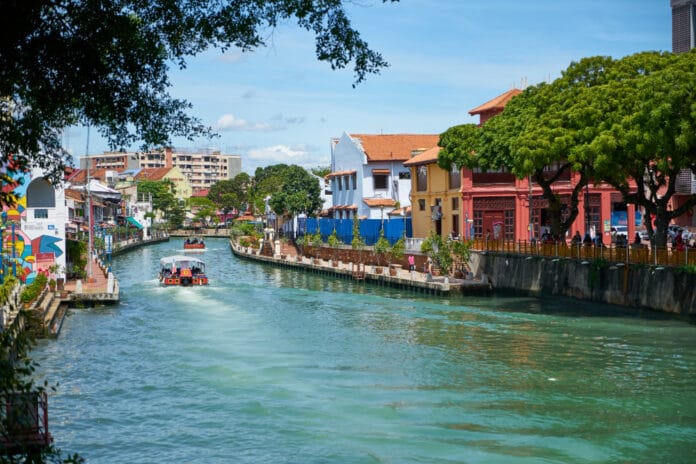Picture this: you’re floating above pristine coral gardens in water so clear it feels like flying, surrounded by thousands of golden jellyfish that have forgotten how to sting. Welcome to Palau, one of the planet’s last unspoiled diving paradises. But here’s the thing about this Micronesian gem – timing your visit can make the difference between an unforgettable adventure and a trip dampened by unexpected challenges.
After five visits to this incredible archipelago over the past decade, I’ve learned that determining the best time to visit Palau isn’t just about avoiding rain or finding cheap flights. It’s about aligning your travel dates with your priorities: crystal-clear diving conditions, comfortable weather, manageable crowds, or that perfect balance of all three.
Whether you’re a seasoned diver chasing manta rays, a nature lover seeking pristine beaches, or a budget traveler looking for the cheapest time visit Palau, this guide will help you plan the perfect Palauan adventure.

Understanding Palau Weather Patterns
Palau weather follows a relatively predictable tropical pattern, but understanding the nuances can significantly impact your experience. Located just 7 degrees north of the equator, Palau enjoys warm temperatures year-round, but the rainfall patterns tell a more complex story.
The Dry Season: November to May
The Palau dry season runs from November through May, and it’s what most travelers consider the best time to visit Palau for good reason. During these months, you’ll experience consistently warm temperatures ranging from 84-88°F (29-31°C), with significantly reduced precipitation – typically 4-8 inches per month compared to 12-15 inches during wet season peaks.
The consistent northeast trade winds provide natural cooling and help keep mosquitoes at bay. Humidity levels are more manageable at 75-80% compared to 85-90% in the wet season, making outdoor activities significantly more comfortable.
The Wet Season: June to October
The Palau wet season shouldn’t be dismissed entirely, as it offers unique advantages for the right traveler. Rainfall increases substantially, but “wet season” doesn’t mean constant rain. You’ll typically see intense but brief downpours, often in late afternoon or evening, followed by clear skies.
Temperatures remain consistently warm, actually slightly warmer than the dry season, with daytime highs reaching 88-91°F (31-33°C). While Palau is generally outside the main typhoon belt, August and September carry the highest risk of tropical storms, though direct hits remain relatively rare.
Best Time for Diving in Palau
Palau’s underwater world is the main draw for most visitors, and understanding the Palau diving season patterns can help you optimize your underwater experiences.
December to March: Prime Diving Conditions
This period offers the best weather Palau diving combination you’ll find anywhere in Micronesia. Visibility consistently exceeds 100 feet (30 meters) on outer reef sites, with reduced rainfall meaning less runoff affecting coastal visibility.
Water temperature holds a comfortable 82-84°F (28-29°C), perfect for extended dives with just a 3mm wetsuit. This is manta ray season at cleaning stations like German Channel and Ulong Channel, with calm conditions making these sites accessible almost daily.
During my February visit, I completed 18 dives over 6 days without a single cancellation due to weather – something that would be nearly impossible during peak wet season.
April to May: Shoulder Season Excellence
These months represent perhaps the sweet spot if you’re primarily focused on diving. Still technically dry season, but with slightly increased cloud cover that provides welcome relief from intense sun. Water clarity remains outstanding, often the best of the year as the dry season reaches its peak.
Wet Season Diving: June to October
Contrary to popular belief, the Palau diving season doesn’t end with the wet season’s arrival. Fewer crowds mean more intimate dive experiences – I’ve had Blue Corner entirely to myself in July. Water temperatures are slightly warmer at 84-86°F (29-30°C), perfect for photographers who need extended bottom time.
The challenge comes from afternoon thunderstorms that can cut dive days short, and some outer reef sites may be inaccessible during rough weather periods.

Peak Season vs Off-Season Considerations
Understanding Palau’s tourism patterns is crucial for effective Palau travel planning guide strategies.
Peak Season Reality (December – March)
Book accommodations 6-9 months in advance for the best properties. During my last February visit, several popular resorts were fully booked, forcing last-minute travelers to less desirable options. Popular dive sites can feel crowded, with 3-4 boats at Blue Corner simultaneously during peak times.
Expect premium pricing during this period – accommodation rates can be 40-60% higher than off-season, and diving packages often have minimal discounts.
Off-Season Advantages (June – September)
This is the cheapest time visit Palau, with accommodation rates dropping 30-50% and dive operators often offering package deals. With fewer tourists, you’ll have more opportunities for genuine interactions with locals and access to popular sites without crowds.
During my September visit, I paid $120 per night for a waterfront room that cost $280 in February, and had some of my best diving experiences due to the lack of crowds. However, success during this period requires flexible planning and backup activities for weather-affected days.
Month-by-Month Guide
January-February: Peak conditions with ideal weather and excellent diving, but highest crowds and prices. Best for first-time visitors wanting guaranteed good weather.
March-April: Continued excellent conditions with slightly fewer crowds. Perfect for serious divers and photographers seeking optimal underwater visibility.
May: Late dry season with warming temperatures. Great balance of good conditions and more reasonable pricing as tourist numbers begin to drop.
June-August: Early to mid wet season. Budget-friendly with significantly fewer crowds, but requires flexibility for weather-related changes. Excellent for adventurous travelers seeking deals.
September-October: Late wet season transitioning back to dry. Variable conditions but great value for money and minimal crowds.
November: Dry season conditions returning with moderate crowd levels. Excellent for all types of travelers seeking good value.
Essential Palau Travel Tips by Season
Dry Season Essentials
Pack reef-safe sunscreen (mandatory in Palau), wide-brimmed hats, and UV-protective clothing for intense sun exposure. Light layers are important as air-conditioned spaces can be chilly. Water temperatures make a 3mm wetsuit ideal for diving, though many are comfortable with just a rash guard.
Wet Season Preparation
A compact, quick-dry rain jacket is essential, along with waterproof bags for electronics and important documents. Build buffer time into your schedule for weather-related changes and have backup activities planned to prevent disappointment.
Year-Round Must-Haves
Only reef-safe, non-chemical sunscreens are permitted due to Palau’s strict environmental protections. An underwater camera is essential – consider renting professional equipment locally if you don’t own it. Comfortable water shoes are crucial for rocky shorelines and coral protection.
Budget Considerations and Planning
Peak Season Strategies
Secure accommodations and diving packages 6-12 months in advance for better rates. Many resorts offer dive/accommodation packages that provide better value than booking separately. Midweek arrivals can sometimes reduce costs compared to weekend travel.
Off-Season Value Maximization
Dive operators and accommodations sometimes offer significant discounts for last-minute bookings during slow periods. Extended stays often qualify for weekly rates that provide substantial savings. Building relationships with local operators can lead to special deals and unique experiences.
Universal Budget Tips
Consider accommodations with kitchen facilities or explore local restaurants rather than expensive resort dining. For infrequent divers, renting gear locally can be more cost-effective than purchasing and traveling with equipment.

Special Events and Cultural Considerations
Palau Independence Day (October 1) brings traditional dances, cultural displays, and community gatherings. Hotels book quickly, but it’s an incredible cultural experience. Manta Ray Season (December-April) creates a natural festival for underwater enthusiasts, with reliable manta ray encounters at cleaning stations.
Understanding local school holidays and traditional fishing seasons can affect accommodation availability and dive site selections, but also provides opportunities to witness authentic cultural practices.
Final Recommendations
For First-Time Visitors: February through April offers the most reliable experience with excellent weather, calm seas, and peak diving conditions. Yes, it’s more expensive and crowded, but you’ll have the best chance of falling in love with this incredible destination.
For Budget-Conscious Travelers: June through September provides significant savings with proper planning and flexible attitudes. Pack for variable weather and maintain backup activity plans.
For Serious Divers: December through May provides the most consistent diving conditions and outer reef access. March and April offer excellent conditions with more manageable crowds.
For Photography Enthusiasts: March through May provides optimal underwater visibility while offering more interesting skies than peak months, plus fewer tourists in your compositions.
The Bottom Line
The best time to visit Palau ultimately depends on your priorities, budget, and flexibility. This Pacific paradise offers incredible experiences year-round, but understanding seasonal patterns helps maximize your investment in what might be a once-in-a-lifetime trip.
My personal recommendation? If it’s your first visit and diving is primary, visit during peak season (February-April) despite higher costs. The consistent conditions and reliable weather justify the investment. For subsequent visits, explore shoulder and off-seasons for unique experiences and better value.
Remember, Palau is a small island nation with limited infrastructure. Regardless of when to visit Palau, bring patience, flexibility, and adventure spirit. The rewards – swimming with jellyfish, diving with manta rays, and experiencing one of the world’s last pristine marine environments – are worth any minor inconveniences.
Plan well, pack smart, and prepare for an unforgettable journey to one of the Pacific’s most extraordinary destinations. Palau is waiting to share its secrets with you, whatever season you choose to visit.

